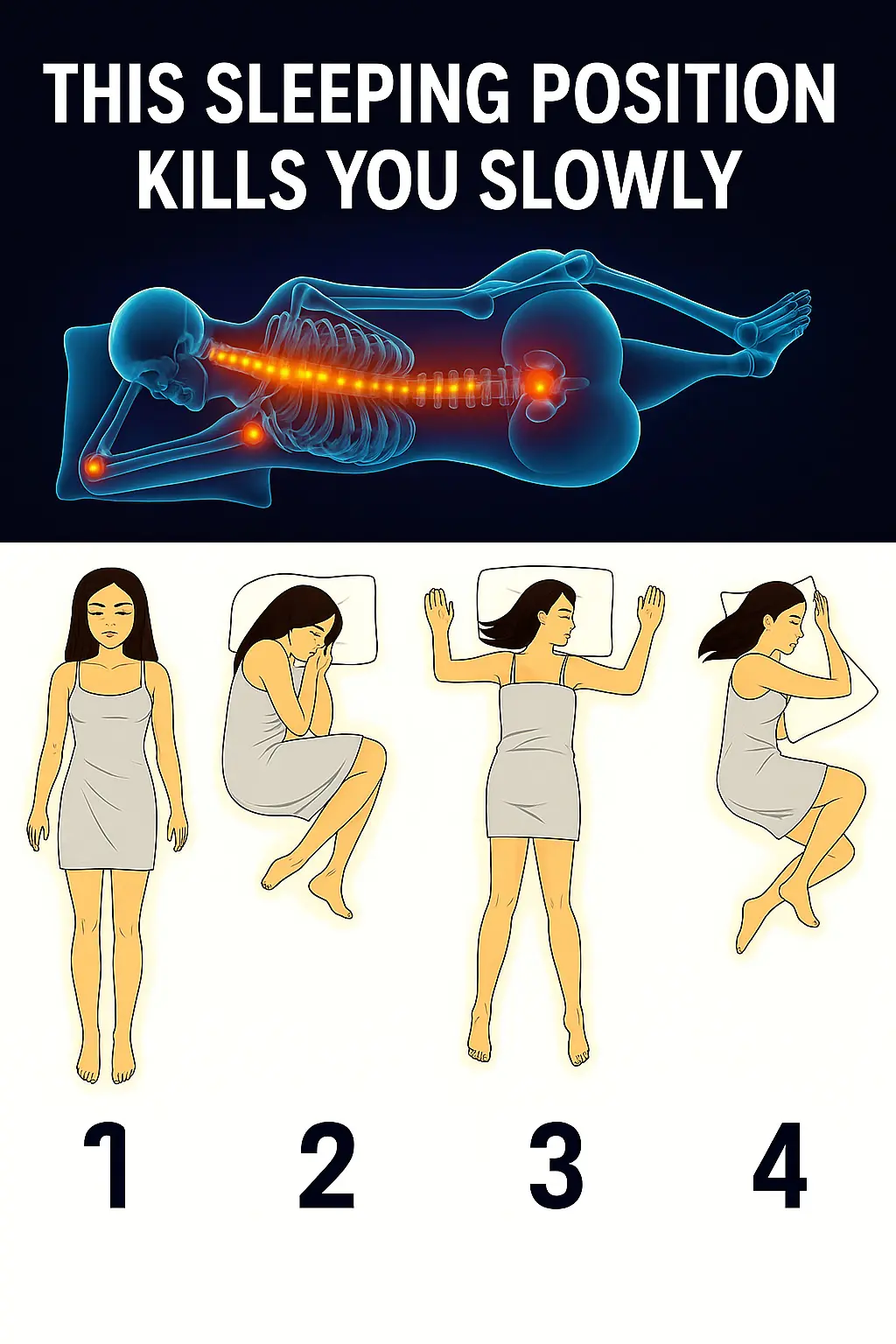
The Most Dangerous Sleeping Position: What You Didn't Know

Sleep is a vital part of our health and well-being, and the position we adopt while sleeping can significantly impact the quality of our rest—and, in turn, our overall health. Many of us don’t give much thought to how we position ourselves in bed, but choosing the wrong posture can lead to issues ranging from muscle pain to more serious complications. In this article, we’ll explore the most dangerous sleeping position you might not expect—and how to avoid it.
Common Sleeping Positions
Before diving into the most dangerous one, let’s review the most common sleeping positions and their impact on our health:
-
On your back: Often recommended because it keeps the head, neck, and spine aligned. However, it may not be ideal if you snore or suffer from sleep apnea.
-
Fetal position: Popular for comfort and warmth, but curling up too tightly can restrict breathing and strain the back.
-
Starfish (arms and legs spread): Can be beneficial, but may take up too much space if you share your bed, potentially causing discomfort to your partner.
-
On your side: A favorable option, especially for people with acid reflux, as it prevents stomach acids from flowing back into the esophagus.
So, What Is the Most Dangerous Sleeping Position?
Despite the options above, sleeping on your stomach is considered the most dangerous. While it might feel natural or comfortable to some, it can have harmful long-term effects. This position puts excessive pressure on the spine and neck, which can lead to chronic pain and muscle tension.
When you sleep on your stomach, your head must be turned to one side to breathe. This creates constant twisting in the cervical spine, increasing the risk of issues like neck herniation and spinal disorders. Moreover, the continuous pressure on the lower back can lead to more serious health problems over time.
Tips for Improving Your Sleeping Posture
Changing your sleep position can help your body rest and recover better. Here are some practical tips to improve your sleep quality:
-
Use proper support: Choose pillows that keep your head and neck aligned. If sleeping on your side, a higher pillow may help reduce spine strain.
-
Stretch before bed: Gentle stretching can release muscle tension and help prepare your body for a better sleeping position.
-
Create a sleep-friendly environment: Ensure your room has the right temperature, low light, and minimal noise to support restful sleep.
-
Pay attention to your habits: If you wake up in pain or discomfort, assess your sleeping posture and the quality of your mattress.
The Impact of Poor Sleep Posture on Health
Ignoring your sleeping posture can lead to more than just aches and pains. Your body needs proper rest to regenerate and recover from daily stress. Bad posture during sleep can contribute to sleep disorders, anxiety, and stress, all of which negatively impact your overall quality of life. Lack of good sleep can weaken your immune system, harm heart health, and even affect your emotional well-being.
Conclusion
The sleeping position you choose has a powerful influence on your health and well-being. Being aware of how you sleep and avoiding harmful positions—especially sleeping on your stomach—can help you get better rest and avoid long-term injuries.
News in the same category


Sip Strength Before Sleep: The Cucumber & Pomegranate Elixir for Unstoppable Vitality at Any Age

Nature’s Power Trio: Garlic, Honey, and Cloves for Vibrant Wellness

The Hidden Power of Prickly Lettuce: The Unpretentious Wonder of Nature ....

Benefits of Drinking Water on an Empty Stomach: Boost Your Health from the Start of the Day

The Benefits of Raw Garlic: A Natural Remedy for Respiratory Health

The Hair-Cleansing Secret Hidden in Plain Sight: Goosegrass and Its Remarkable Shampoo Benefits

Kalanchoe Pinnata: The Healing Plant Hiding in Plain Sight

Chewing Cloves Every Day: The Tiny Daily Habit That Could Transform Your Health

Unlock the Hidden Power of Chayote Juice: Your Secret to Vibrant Health 🌿

Unlock the Hidden Power of Euphorbia Hirta: How to Use This Herb in the Most Natural and Effective Way

Turmeric: A Step-by-Step Natural Remedy

Sumac: A Hidden Treasure for Health and Cooking

Benefits of Chicken Feet and a Delicious, Nutritious Soup

The Multiple Benefits of Clove: A Natural Remedy for Health

Carrot & Banana Juice Recipe 🥕🍌 | Healthy and Delicious!

Say Goodbye to Lower Back and Sciatic Pain: Effective and Natural Techniques

Unlock the Secret to Luscious Hair: A Natural Tonic That Will Transform Your Scalp!

Unveiling the Secret Superpower of Papaya Leaves: A Game-Changer for Your Health
News Post

💗 Pink Oreo Dream Bars

🍓 Decadent Chocolate Strawberry Cake

7 Things That Happen To Your Body When You Don’t Have Sex For A While

Why are your veins suddenly bulging and visible?

7-Eleven Employee Dies After Being Left Brain-Dead in Shocking Incident Involving Manager

Stomach Bug Sickens Over 140 People on Caribbean Cruise, Forcing Passengers and Crew to Isolate in Cabins

🌘 The Longest Total Solar Eclipse of the Century Is Coming — August 2, 2027

🌠 Twin Meteor Showers Set to Illuminate the Night Sky July 29–30, 2025 🌠

K9 dog wouldn’t stop barking at room 207 in a hospital – what they found inside was horrifying

Transform Your Day with the Ultimate Almond Banana Avocado Smoothie

Sip Strength Before Sleep: The Cucumber & Pomegranate Elixir for Unstoppable Vitality at Any Age

Nature’s Power Trio: Garlic, Honey, and Cloves for Vibrant Wellness

Dog waiting to be adopted ‘cries’ every night – shelter posts sad photo as one last hope

The Hidden Power of Prickly Lettuce: The Unpretentious Wonder of Nature ....

🍫 Triple Chocolate Drip Cake with Truffles & Ganache Drip

My neighbor requested that I care for her 6 children – I called children services a couple of hours after she left

Flaxseeds Sleeping Mask That Will Transform Your Skin

At 60, I Healed Cancer, High Blood Pressure, Diabetes, and Poor Circulation – Thanks to This Natural Drink
